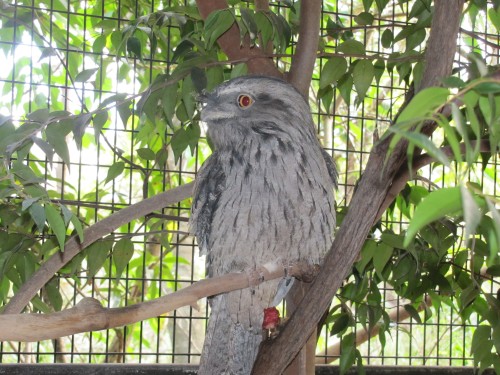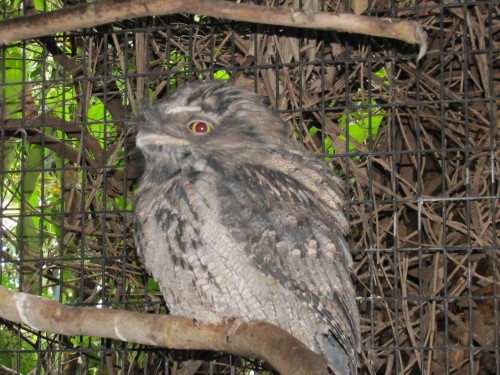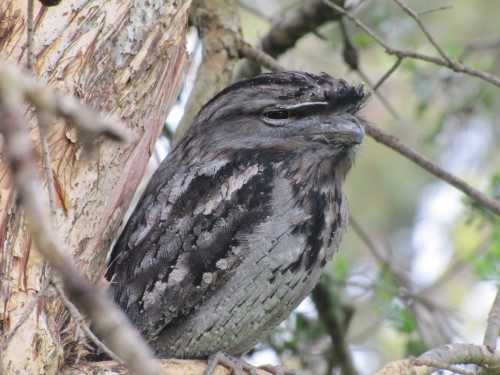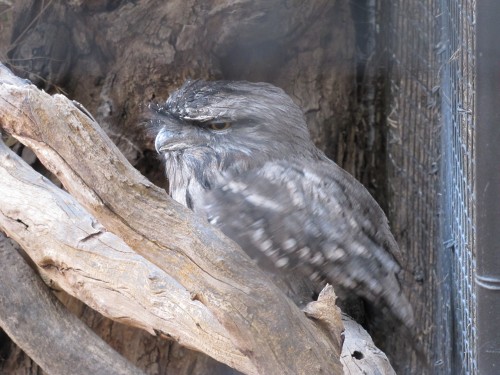Monarto Safari Park South Australia
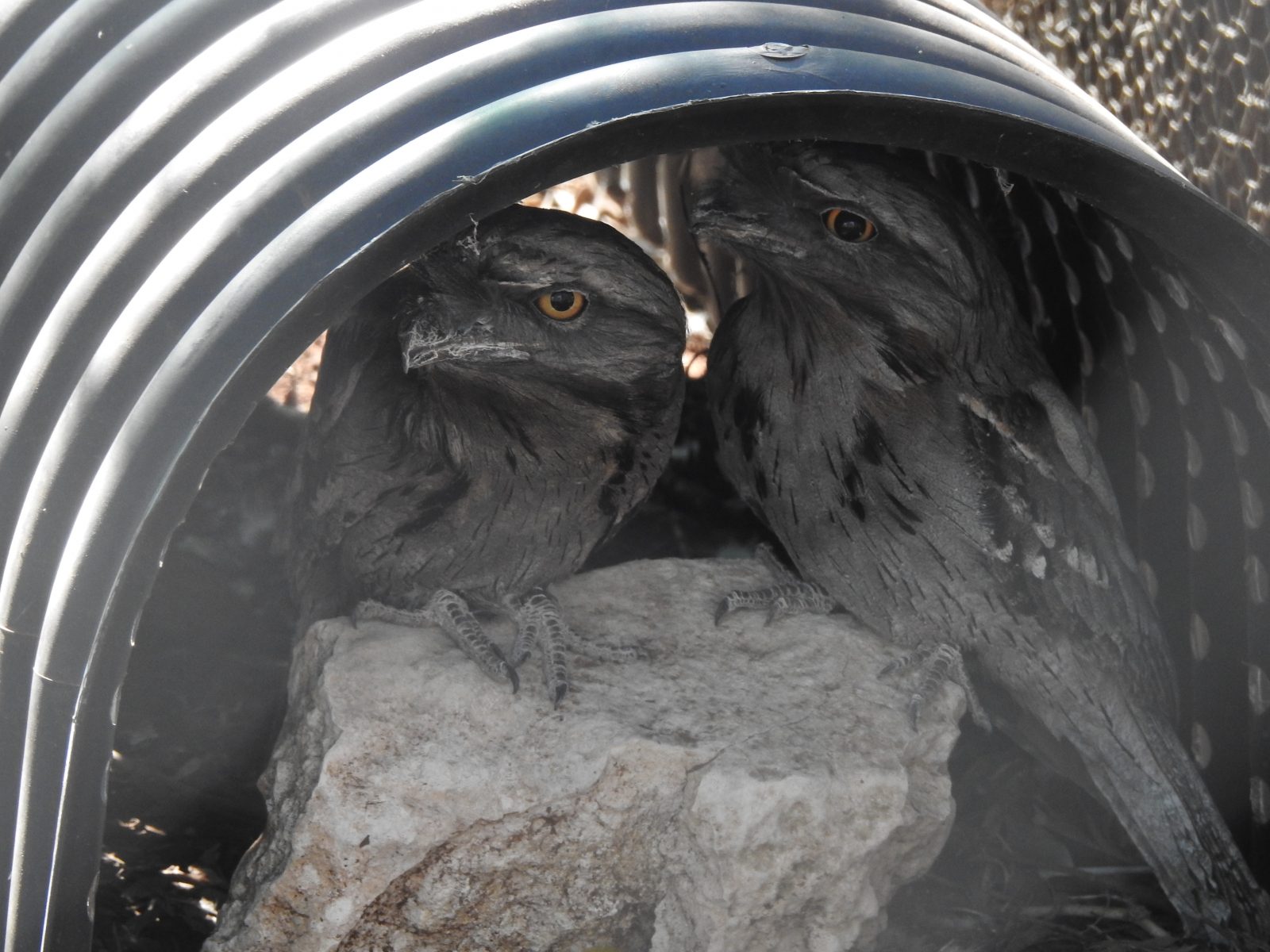
Captive birds
My local zoo is the Monarto Safari Park just fifteen minutes from my home in Murray Bridge, South Australia. This zoo is a part of the Adelaide Zoo which is about an hour’s drive from here. I am a Life Member and try to visit often. One of my recent visits was last year when I went for one of the many walks in the park. On one of these walks, there is a large aviary which has a few captive birds in it, including the Tawny Frogmouths shown above.
Tawny Frogmouths are a widespread nocturnal species in this area and it is found throughout Australia, including Tasmania. From time to time I occasionally hear or see this species in my garden. My family and I love hearing the soft call of this bird and we have fond memories of hearing and seeing them on various camping trips.
Bush Stone-curlew
Another mostly nocturnal species in the aviary at Monarto is the Bush Stone-curlew, shown in the photos below. Again, this widespread species is found in many parts of Australia except Tasmania. Campers in our more remote areas may have heard its haunting call at night. On the other hand, in some areas, the Bush Stone-curlew has adapted to life in towns and cities, especially in Queensland where it is commonly seen on golf courses and reserves.
Annoyingly, this is one species I have yet to see in its natural environment and I only have photos like those shown below which have been taken in zoos. I must get out and travel more.
Non-captive birds
As visitors to Monarto Safari Park join the many bus tours through the large park, it is possible to see many of our local native bird species. These include Emus, Australian Magpies, Little Ravens, Brown Falcons, Black Kites, Wedge-tailed Eagles, various parrot species, as well as smaller bush birds like the Willie Wagtail, woodswallows, thornbills, wrens and a variety of water birds when there is water in the creek flowing through the park.
The best way of seeing and photographing these birds is to stroll along the many walking trails through the mallee scrub land. Warning: try not to wander into the African Lion enclosure, or you might find yourself invited to lunch – with you on the menu. By the way: the zoo has four new lion cubs born only recently and they are now on display.
One easily seen species is the White-winged Chough which is about the size of our magpies and ravens. They are often seen in family groups of 10 – 15 and as they fly the white on their wings can easily be seen. On my walk to see the aviary birds I also saw one of their mud nests (see the last photo below).
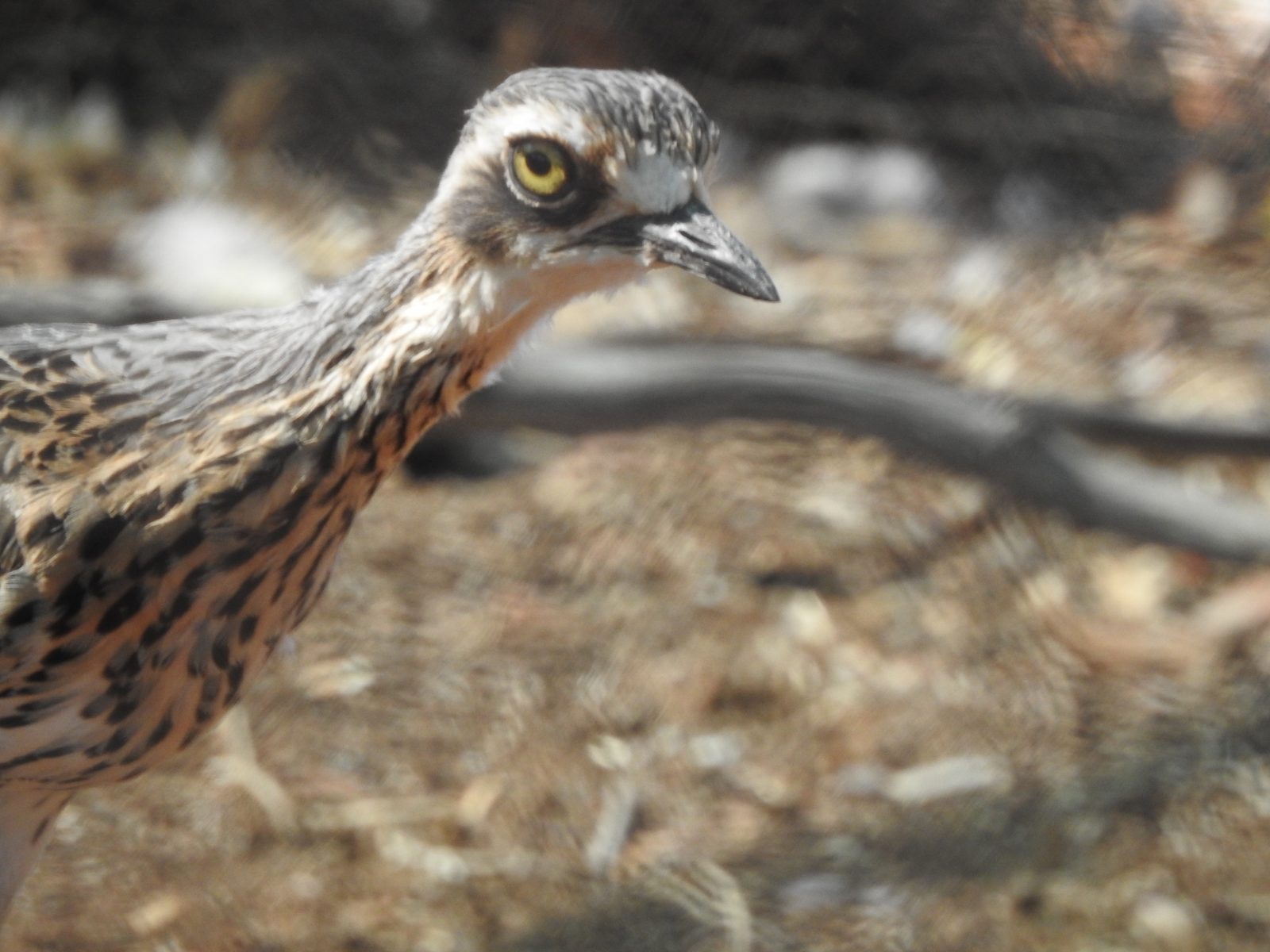
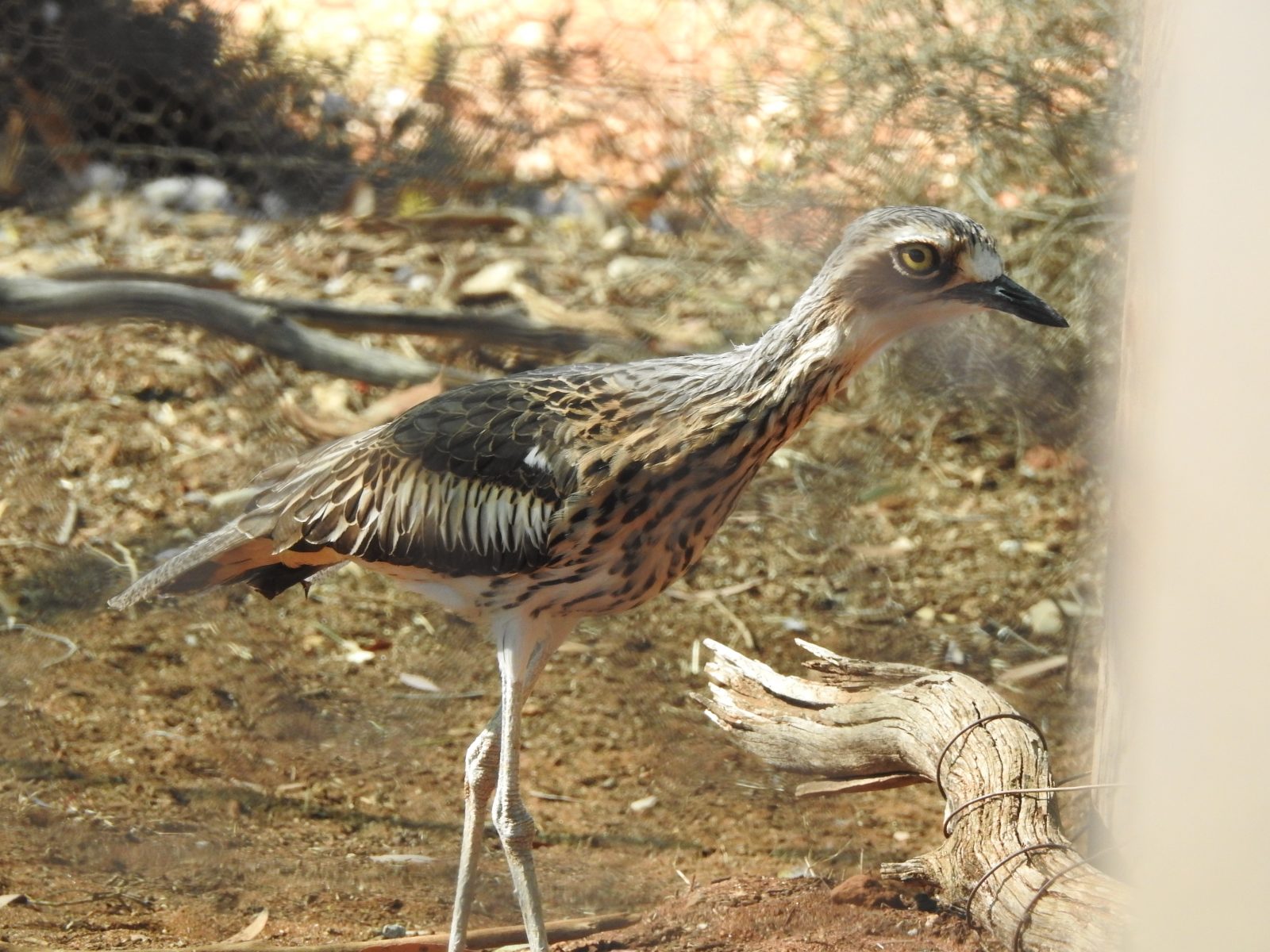
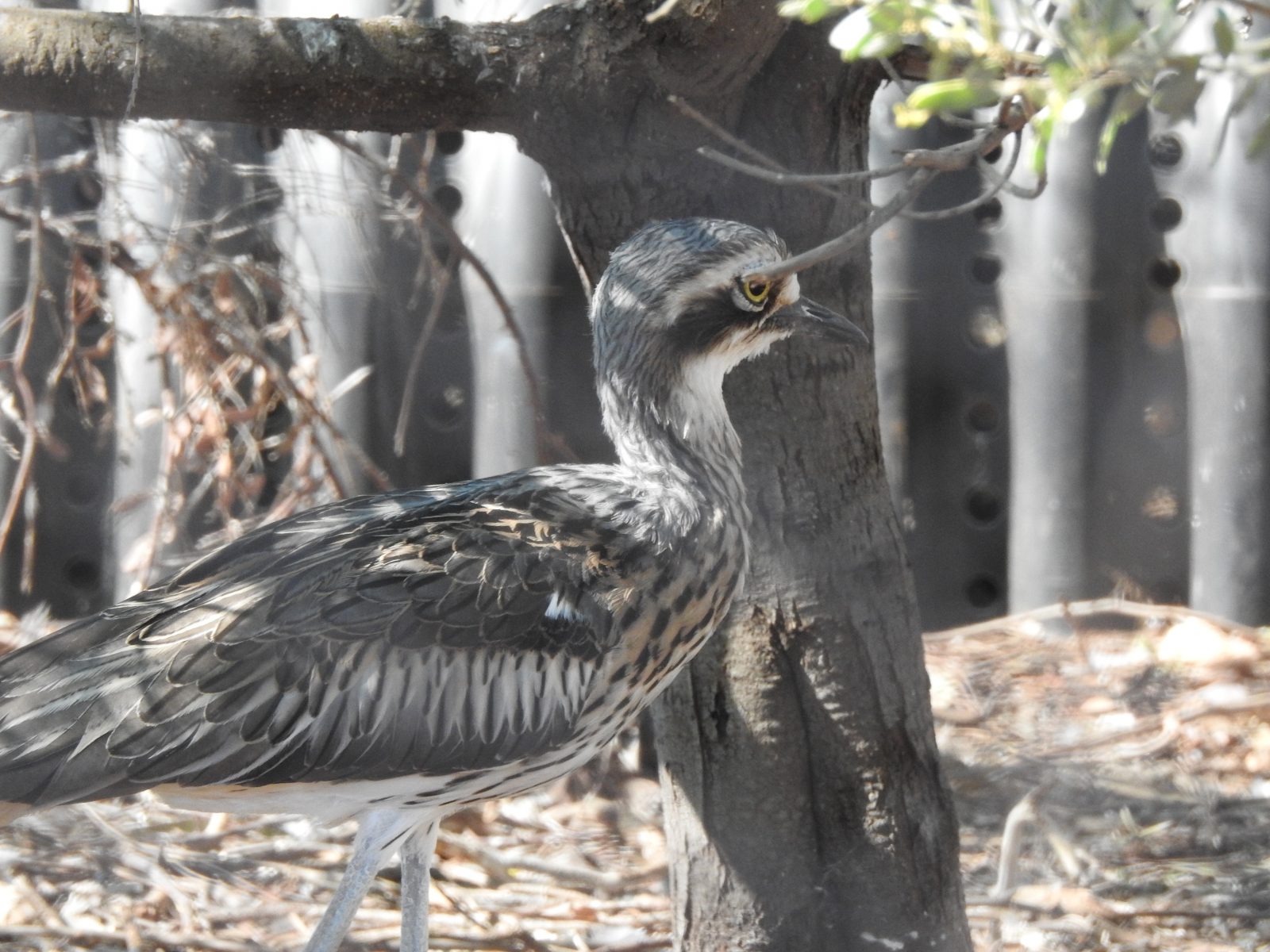
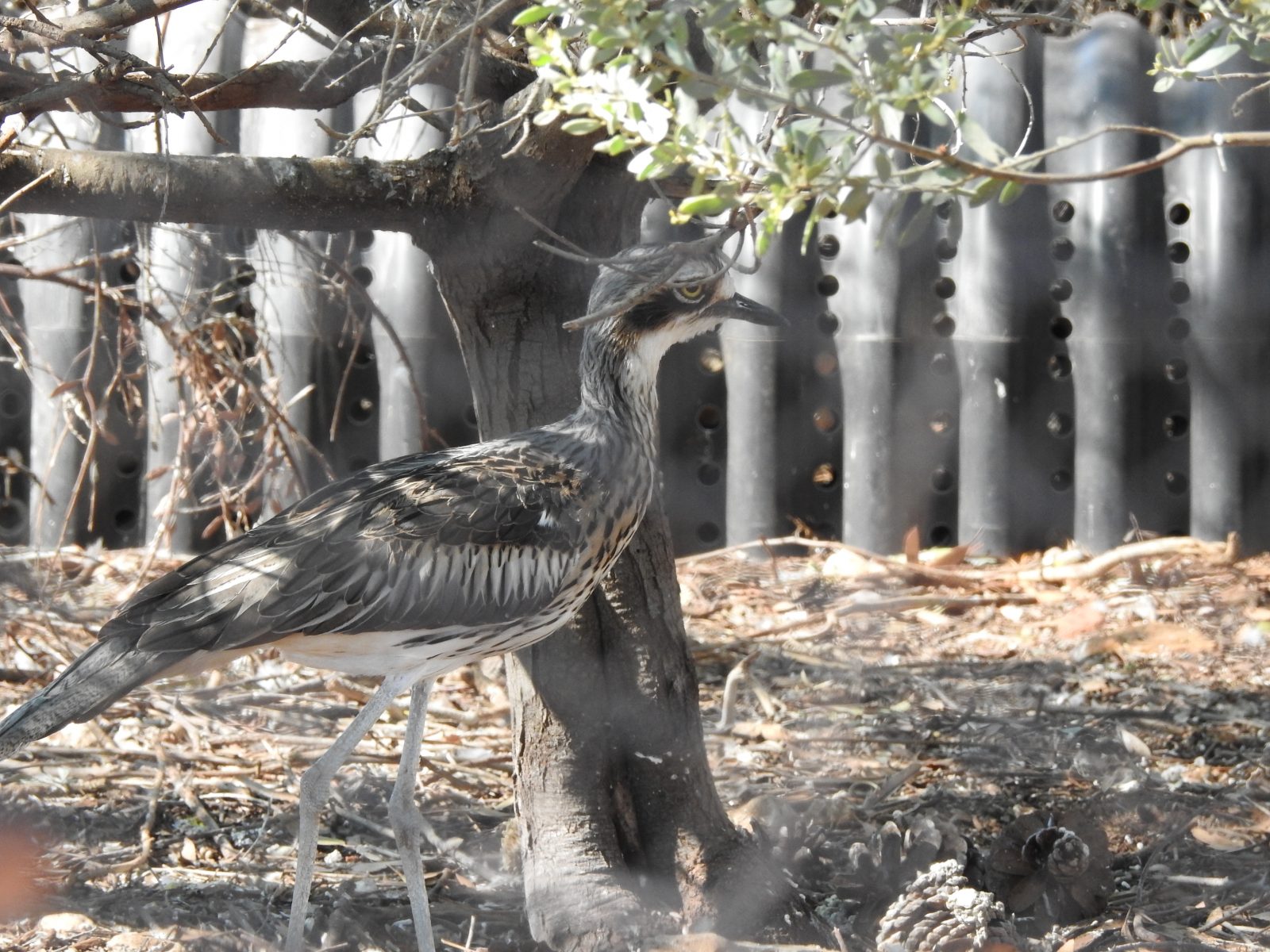
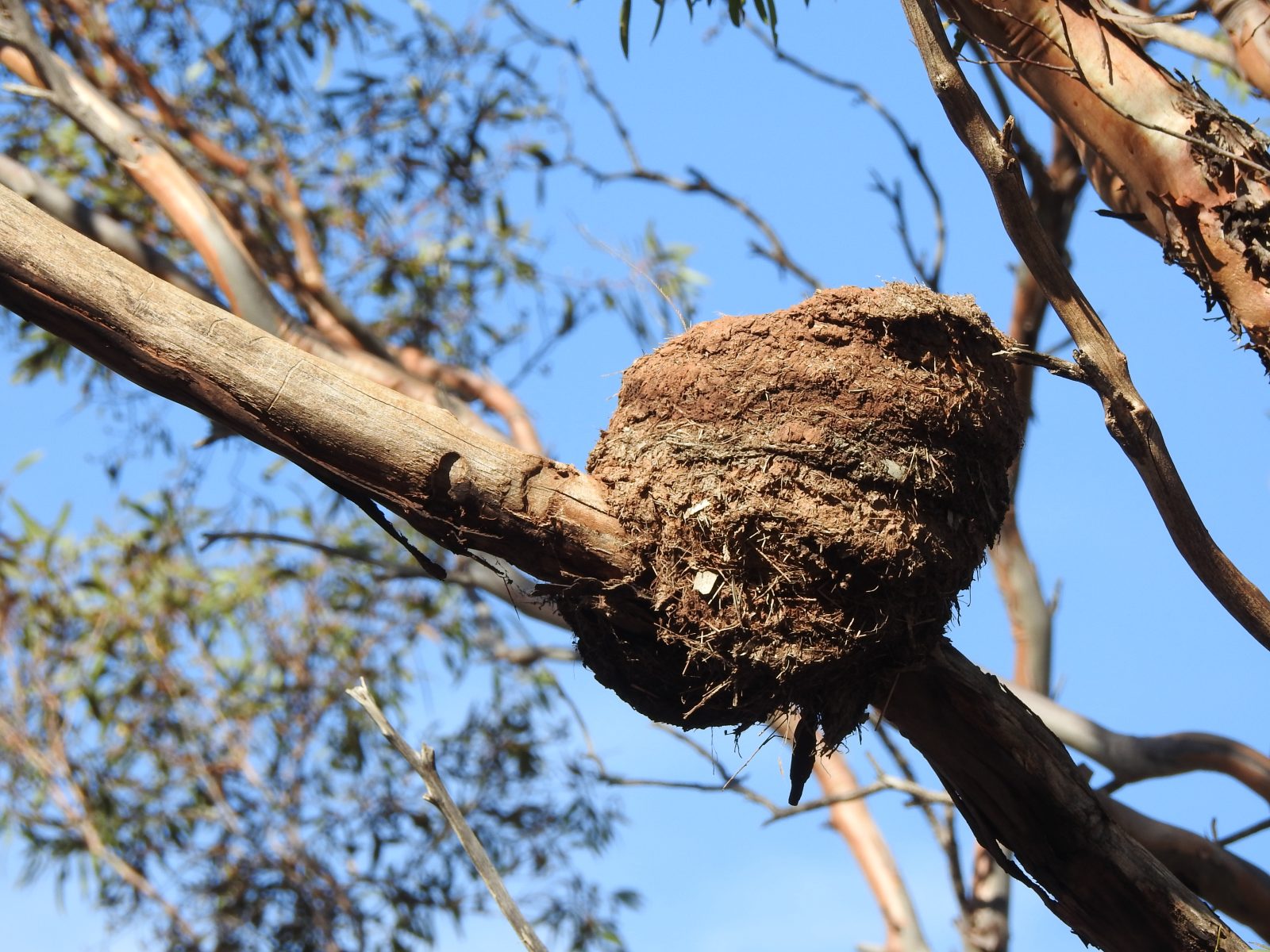
Look out owl
After nearly three weeks visiting family in Sydney and playing with our delightful grandchildren, we are on our way home again. We have reached Narrandera in the Riverina region of New South Wales. This is one of our regular stops on our way to and from Sydney.
We treated ourselves to a wonderful meal for dinner at the Hing Wah Chinese Restaurant in the main street. The food was delicious and the service excellent. I highly recommend this eatery. On our way back to our cabin in the caravan park we nearly hit an owl as it crossed the road in front of our car.
I am not sure what species it was but from its colour – mostly brown – and size it was possibly a Tawny Frogmouth or a Boobook Owl. It certainly did not have the lighter colours of a Barn Owl, and it was too big to be an Owlet Nightjar. It made a good ending to a rather poor birding journey today. Between Sydney and here we saw very few birds, except for a half hour stop for afternoon tea at the Wagga Wagga Botanic Gardens.
UPDATE: at 5:30am the next morning I heard the call of a Southern Boobook Owl just outside our cabin in the caravan park where we were staying for the night. It was good to have my initial identification confirmed.
Tawny Frogmouths at the Australian Reptile Park
On our recent visit to the Australian Wildlife Park near Gosford north of Sydney, I was pleased that a part of their collection of animals included birds. In fact, some of the birds were in walk-through aviaries. Such cages are good opportunities to get good photos of species it would be hard to obtain with animals in the wild.
One of the aviaries featured owls and frogmouths. I’ll show the owls in another post in a few days’ time.
Tawny Frogmouths, as shown in today’s post (above and below) are one of my favourite birds. Ever since a family Easter camp in the 1986 at Hattah-Kulkyne National Park in north-west Victoria we have loved these birds. On that occasion one decided to roost on a branch above our tent and call for quite a while during the night. Once we worked out what it was, the constant oom-oom-oom call soothingly put us to sleep.
We have occasionally heard and seen this species in our garden at home in Murray Bridge, South Australia. Because of its soft call we do not hear it if the television is going in the evening. Perhaps that is a good reason for occasionally switching it off.
Tawny Frogmouth in Artarmon, Sydney
My wife and I are currently staying with our son and family in Artarmon, a suburb of Sydney in New South Wales. Our two grandchildren, ages 5 and nearly 3 are taking an increasing interest in birds, due mainly from my influence. I often have my binoculars out looking at the birds seen in their garden or in nearby parks.
Last week my son was removing some clothes from the clothesline after dark. As he was getting the clothes off, he realised that he was being watched from the top of the clothesline a mere two metres away. From his own observations he instantly recognised it as a Tawny Frogmouth.
The bird stayed on the clothesline as he chatted quietly to it, removing the clothes slowly. As he turned to go inside, the bird silently flew off. He remarked to me how silently it departed.
Two nights ago the bird returned; I am assuming it was the same bird. Again it was perched on top of the clothesline. This time the grandchildren were still awake, so in turn I picked them up and quietly approached the clothesline. Each of them had good views of the bird before it silently flew off into the night.
Wonderful.
I didn’t get a photograph as I was more interested in letting the children see the bird. Below is a photo taken in a friend’s garden in the Adelaide Hills several years ago.
Tawny Frogmouth keeps us awake
My wife and I are currently staying in Sydney with our son and his family. We are having great fun playing with our two grandchildren age 5 and 2.5. We will be here until Christmas.
Because of the configuration of the house, the spare bedroom is at the back of the house, next to some large bushes and near to some large street trees. Up until recent days the Laughing Kookaburras have woken us before 5am; one morning it was 4:33am. As first light filters through the trees the hundreds of locally resident Rainbow Lorikeets start up their screeching as they fly from tree to tree.
Because of those two noisy resident species we treasure every second of sleep we can get, especially when the grandchildren usually knock on our door well before 7am. So it was a little disconcerting to have a Tawny Frogmouth doing the overnight shift, calling just outside our bedroom window! Fortunately, the call was soft enough not to keep me awake.
